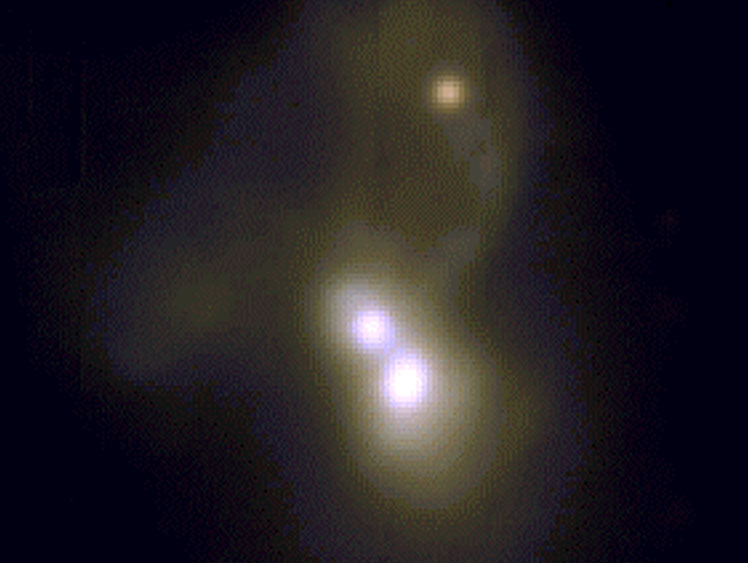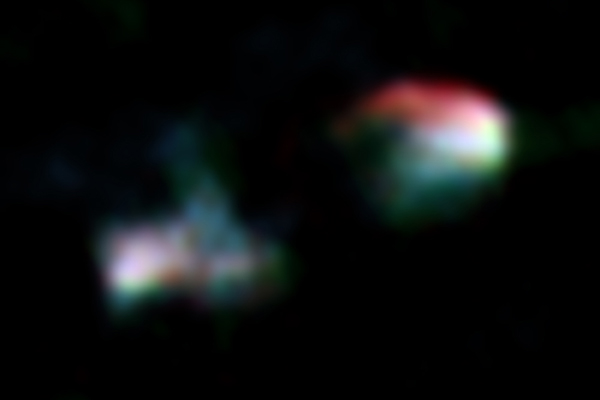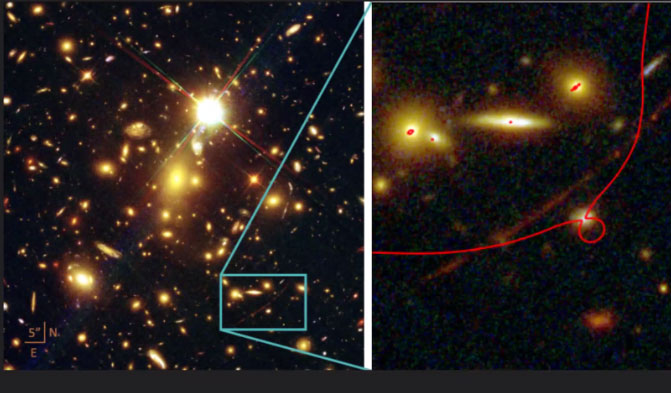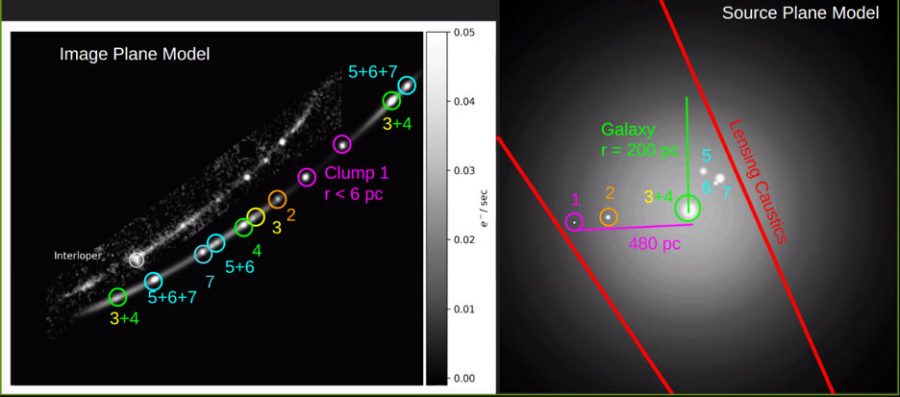Hot topics from the American Astronomical Society summer meeting range from colliding galaxies, to warped galaxies, to starving black holes.
Galactic Head-on Collision
Galaxy mergers may sound like a destructive cosmic car crash, but such collisions are quite common and vital to the evolution of the universe. In fact, our own Milky Way may have gone through several collisions before humans evolved and is due to crash into Andromeda in 4.5 billion years. However, catching three galaxies in the act of colliding is a rare treat, one fortuitously caught by astronomers at the University of Maryland.
Graduate student Jonathan Williams presented his findings on the triple galaxy merger on June 7th at the virtual meeting of the American Astronomical Society. Visible-light observations, as well as near-infrared, radio, and X-ray images, reveal that the two southernmost galaxies host central supermassive black holes that are actively feeding on gas and dust and burping up extreme amounts of radiation. These are known as active galactic nuclei (AGN). Astronomers have found less than ten triple mergers that also exhibit AGN activity, so this colliding pair is an unusual find.

Credit: VLT/MUSE
The AGN duo offers a unique chance to investigate just what makes these systems tick. Radio data from the southern galactic core suggest that dust and gas may be blocking some light from the feeding black holes. Perhaps this merger could help uncover what causes some AGN to appear to ‘turn on’ and ‘turn off’.
The northern galaxy appears to be a dwarf galaxy and doesn’t host an AGN. A tidal stream appears to connect this northern galaxy to the southern core, which indicates that the dwarf galaxy has likely passed through the merger already. As the dwarf galaxy makes its way out of the system, its influence might cause the southern galaxies to merge even more quickly.
Williams states in a press release that he hopes to observe this triple merger with the Hubble Space Telescope in order to better understand the system.
A Black Hole on A Serious Diet
As hard as it is to catch merging AGN, it’s just as difficult to catch one in the final phases of its life. A supermassive black hole may feed for hundreds of thousands of years, so witnessing its death is a matter of chance. However, Kohei Ichikawa (Tohoku University, Japan) and his team happened to be so lucky and shared a serendipitous discovery of a dying AGN on June 7th at the virtual meeting of the American Astronomical Society.
Ichikawa realized something strange when observing Arp 187 with the Very Large Array (VLA) in New Mexico and Atacama Large Millimeter/submillimeter Array (ALMA) in Chile. The radio images show two jets emerging from the core, a telltale sign of an AGN; however, the core itself is completely radio silent.

Credit: VLA/ALMA (ESO/NAOJ/NRAO), Ichikawa et al.
Visible-light images show a region of gas spanning several thousand light-years ionized by the AGN, which at first glance means the central black hole should be actively feeding and bright. However, X-ray observations with the Nuclear Spectroscopic Telescope Array (NuSTAR) probe a region just 30 light-years across the core, and they show no evidence of black hole activity.
These observations may seem contradictory, but they tell the history of Arp 187. The ionized regions took thousands of years to expand, and therefore represent the AGN’s activity thousands of years ago. In contrast, the X-ray observations reveal the AGN’s more recent past. Ichikawa and his colleagues conclude that this AGN must have stopped feasting recently, within the last thousand years.
Now that Ichikawa has shown what a dying AGN looks like, astronomers know what to look for in future observations to find more end-of-life AGN. This team’s work is published in the Astrophysical Journal and Astrophysical Journal Letters.
Most Highly Magnified Distant Galaxy
Galaxy clusters can act as cosmic lenses, their immense gravitational fields magnifying light from distant objects lined up just right behind them. Now, astronomers have found one such object where the alignment was even luckier than most.
A galaxy from when the universe was less than a billion years old lies just on the edge of a gravitational lens dubbed the “Sunrise Arc.” Because of the galaxy's position behind the foreground cluster, the cluster magnifies its light by a factor of 9,000, offering a better view of this galaxy than any other found at this distance.

ESA / Hubble & NASA / RELICS / B. Welch (John Hopkins University)
The magnification is strong enough that astronomers can make out individual star-forming clumps less than 20 light-years across. To see these clumps, they first have to use computer models to "flatten out" the galaxy, which is distorted by the gravitational lens.

Brian Welch (Johns Hopkins University)
Brian Welch (Johns Hopkins University), who reported the results on June 9th at the virtual meeting of the American Astronomical Society, is part of a group of astronomers who will observe this galaxy with the soon-to-be-launched James Webb Space Telescope. Webb will measure the clumps’ precise sizes as well as their star formation rate and composition, offering a view of star formation at the smallest scales in the universe’s first billion years.
 0
0









Comments
You must be logged in to post a comment.